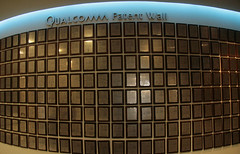
- Image by jontintinjordan via Flickr
Patent nonsense
DO PATENTS help or hinder innovation? Instinctively, they would seem a blessing, especially for backroom tinkerers. Patenting an idea gives its inventor a 20-year monopoly to exploit the fruit of his labour in the marketplace, in exchange for publishing a full account of how the new product, process or material works for all and sundry to see. For the inventor, that may be a reasonable trade-off. For society, however, the loss of competition through the granting sole rights to an individual or organisation is justified only if it stimulates the economy and delivers goods that change people’s lives for the better.
Invention, though, is not innovation. It may take a couple of enthusiasts working evenings and weekends for a year or two—not to mention tens of thousands of dollars of their savings—to get a pet idea to the patenting stage. But that is just the beginning. Innovations based on patented inventions or discoveries can take teams of researchers, engineers and marketing experts a decade or more, and tens of millions of dollars, to transfer to the marketplace. And for every bright idea that goes on to become a commercial winner, literally thousands fall by the wayside.
Most economists would argue that, without a patent system, even fewer inventions would lead to successful innovations, and those that did would be kept secret for far longer in order to maximise returns. But what if patents actually discourage the combining and recombining of inventions to yield new products and processes—as has happened in biotechnology, genetics and other disciplines?
Or what about those ludicrous business-process patents, like Amazon.com’s “one-click” patent or the “name-your-price” auction patent assigned to Priceline.com? Instead of stimulating innovation, such patents seem more about extracting “rents” from innocent bystanders going about their business. One thing has become clear since business-process patents took off in America during the 1990s: the quality of patents has deteriorated markedly. And with sloppier patenting standards, litigation has increased. The result is higher transaction costs all round.
It is not simply a failure of the United States Patent and Trademark Office (USPTO) to scrutinise applications more rigorously. The Federal Circuit (America’s centralised court of appeal, established in 1982 to hear, among numerous other things, patent disputes) has been responsible for a number of bizarre rulings. Because of its diverse responsibilities, the Federal Circuit—unlike its counterparts in Europe and Japan—has never really acquired adequate expertise in patent jurisprudence.
To be eligible for a patent, an invention must not just be novel, but also useful and non-obvious. Anything that relies on natural phenomena, abstract ideas or the laws of nature does not qualify. The USPTO has taken to requiring a working prototype of anything that purportedly breaches the laws of physics. So, no more perpetual-motion machines, please.
Check out Techdirt.com
Related articles by Zemanta
- USPTO To Review Controversial VoIP Patent (yro.slashdot.org)
- The Economist Notices That The Patent System Is Hindering Innovation And Needs To Be Fixed (techdirt.com)
- USPTO Rejects Submission Because It Was Faxed ‘Upside Down’ (techdirt.com)
- Yet Another Study Shows That Patents Lead To Sub-Optimal Innovation (techdirt.com)
- Who Owns Science? The Manchester Manifesto (mt-soft.com.ar)
![Reblog this post [with Zemanta]](http://img.zemanta.com/reblog_b.png?x-id=e581148f-c205-4314-9ac6-75e7b439dda5)








